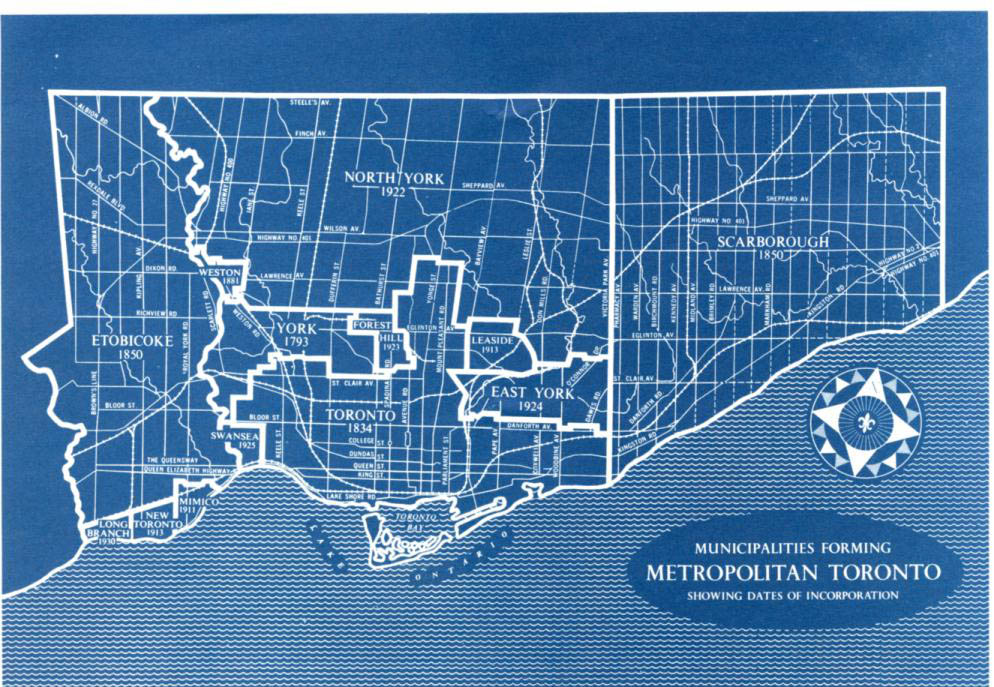A recent article in The New York Times praised the former Metro Toronto regional government for laying the groundwork for the city’s current prosperity while helping to prevent the sort of local schisms that have damaged many cities in the U.S.
Although the former Metro government eventually gave way to an amalgamated Toronto, it provided much of the critical infrastructure that is now foundational to the local economy.
Mississauga is currently dealing with a similar scenario, having built to its boundaries. Mayor Bonnie Crombie recently proposed that her city leave the Region of Peel and encouraged its neighbour, Brampton, to do the same.
Though Metro Toronto, and even Peel Region, may have outgrown their usefulness, it is time we give upper tier municipal government a major rethink rather than throwing it out altogether.
Toronto Mayor John Tory has just returned from a trade mission that took him to Silicon Valley and Asia. On the tour, he didn’t just tout his own city, but the larger region stretching to Kitchener-Waterloo. This is the right way to go.
Our research at the Martin Prosperity Institute shows that economic competition is now primarily between cities rather than countries. To be successful in this environment, Toronto and its neighbours need to find a way to erase local divisions and solve their problems together. To be sure, there are organizations such as the Toronto Region Board of Trade that are already leading this charge. Similarly, Metrolinx on transportation and the Ontario Growth Secretariat on planning issues also work at this scale.
But what Toronto really needs is an institution that gives democratic legitimacy to the very important decisions being made for the benefit of the wider region.
A new larger regional authority is not the answer to all our problems, but it would certainly help in a few key areas.
The first is the economy. If the wider Toronto region is truly going to be competitive, there must be greater local collaboration. Skilled workers are the most important ingredient of a prosperous knowledge economy. There needs to be tighter co-ordination between the needs of local business and the region’s universities and colleges.
Toronto has a lot going for it, including being one of the most diverse cities in the world. Its cultural diversity needs to be leveraged by making use of existing global networks. We need to aggressively present a more confident image to the world. We need to do this as one region.
The second area is land-use planning. As the region becomes physically larger we need to get smarter about what goes where. This is especially true when it comes to economic land uses which are often secondary considerations to residential neighborhoods.
A recent report published by the Neptis Foundation demonstrated the general lack of understanding and co-ordination in planning for commercial land uses. As the economy becomes more knowledge intensive many businesses will not conflict with residences in the ways that many “old economy” businesses once did. More mixed-use and denser neighbourhoods can be both more sustainable and more productive if done right.
The third key area is transportation, where clearly much work needs to be done. If people are going to be able to go to work and back in a reasonable amount of time, there will have to be a radical remaking of the entire system. Simply expanding the network will not be enough; this will involve weighing more complex and contentious policies such as fare and route integration between transit systems and road tolls.
To be effective, these actions need to be taken in a highly co-ordinated manner while being synchronized with regional land-use planning. No easy task for sure. The cost of not tackling this together however, is potentially catastrophic.
What such an institution would look like is an open question. Simply adding a new “super-metro” level of government is not likely to be well-suited to play the planning and co-ordinating role required. Currently, municipal governments do much of the implementation, the province focuses on the policies and the feds mostly help pay the bills.
A new institution in the place of the current regional municipalities could potentially be composed of elected members from each tier of government. This would help facilitate collaboration across the different levels and could even reach across party lines.
Building the infrastructure the region needs to remain competitive will not be cheap. A new regional authority would require the ability to raise revenues. As the economy would be the main policy focus, a unified commercial tax base would be a logical part of the solution. Such an arrangement could also open the door to exploring new potential sources of revenue, such as a local sales tax.
Toronto is a wildly successful city, world-class in many respects. When our current institutional arrangements were forged, no one predicted the level of growth the region is experiencing. Status quo local government arrangements cannot adequately deliver the level of co-operation and collaboration needed to cope and plan for the future.
If Toronto and its neighbours are serious about competing in the global economy, they will have to get their act together.





